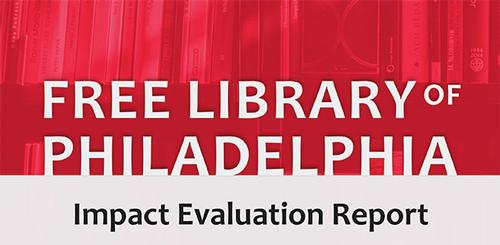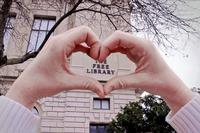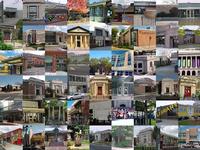
We know the Free Library is one of the most heavily used cultural and educational institutions in our city. We’ve got the numbers: In fiscal year 2017, 640,000 people in Philadelphia held a library card, and the Library welcomed more than 5 million in-person visits—plus millions more online.
But how do Philadelphians view the Free Library? How are they using our offered services? To find out, the Free Library recently partnered with ImpactED at the University of Pennsylvania’s Fels Institute of Government to examine the Free Library’s impact on our visitors. The ImpactED team’s research specifically examined the impact of the Free Library in four key areas: community engagement, literacy, workforce development, and small-business development.
The biggest takeaway? Philadelphians who use the Free Library’s resources benefit greatly from them.
The study, which was undertaken in the fall of 2017, highlights the fact that 96% of Free Library users say the institution is a valuable asset to their community. What’s more, those who know about and use the Library’s resources report positive impacts. For example, 95% of caregivers whose children participate in the Library’s literacy programs report that these programs helped their children learn to read and do better in school. In addition to being a critical resource for early literacy in the city, the Free Library also fuels Philadelphia’s economic engine: Nearly 30% of customers visit the Library to look for a new job or learn new skills, and of those, nearly a third report having found a job because of these resources. Similarly, Philadelphia’s small-business community relies on the Free Library, with 15% of visitors who use these resources reporting that the resources helped them start a small business and 17% reporting that these resources helped them grow their small business.
Other top findings of the study:
Community Engagement
- Library visitors are largely representative (demographically) of Philadelphia residents overall.
- Library visitors are overwhelmingly positive about the Library and its staff.
- 97% feel safe at the Library.
- 96% feel the Library is a valuable part of their community.
- Visitors see the Library as a convening place and anchor point of their neighborhoods.
Literacy
- Only a small proportion of parents or caregivers visiting the Library have children who are enrolled in the different literacy programs offered.
- Parents whose children had attended Library literacy programs report positive impacts. Of parents and caregivers who sent their children to storytime, the Literacy Enrichment Afterschool Program (LEAP), or the Summer Reading program,
- 95% say storytime was valuable for their child in learning to read.
- 95% say LEAP helped their child do well in school.
- 94% say the Summer Reading program was valuable for their child’s literacy.
- Read by 4th is a strong example of the Library as an organizer and convener.
Workforce Development
- Job seekers are visiting the Library and finding new and better jobs as a result of the Library’s programs and resources.
- 29% of visitors say they visited the Library to look for a new job or learn new skills for a job in the last 12 months.
- 32% of job seekers at the Library got a new job with the help of Library programs and resources; 23% report getting a better job.
- Job seekers gained job skills and took positive actions toward gaining new or better employment.
- 62% of job seekers applied for a new job.
- Awareness and use of the Library’s different job-seeker resources and programs vary.
- 80% of job seekers know about the free Wi-Fi; 54% use it.
- 28% of job seekers know about the Job Seekers Guide; 21% use it.
Small-Business Development
- Visitors to the Business Resource and Innovation Center (BRIC) and Regional Foundation Center (RFC) gained tangible skills necessary for starting or improving small businesses and growing nonprofit organizations in the future.
- BRIC and RFC give people access to programming and resources not available elsewhere and are highly valued by users and those working in small-business development in the city.
- Some visitors to BRIC and RFC took actions toward starting or improving small businesses and growing nonprofit organizations.
- 15% of surveyed BRIC users started a small business.
- 17% of surveyed BRIC users grew a small business.
- 9% of RFC users received a grant or funding.
Check out the full report—including findings, details on methodology, and recommendations. Thanks to the minds at ImpactEd at Fels for all their hard work gathering this valuable information!
Have a question for Free Library staff? Please submit it to our Ask a Librarian page and receive a response within two business days.



